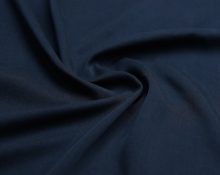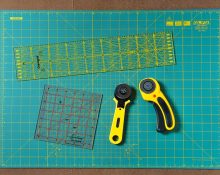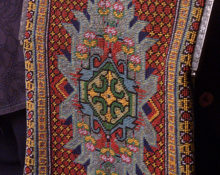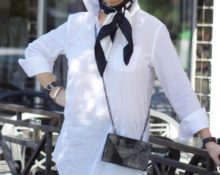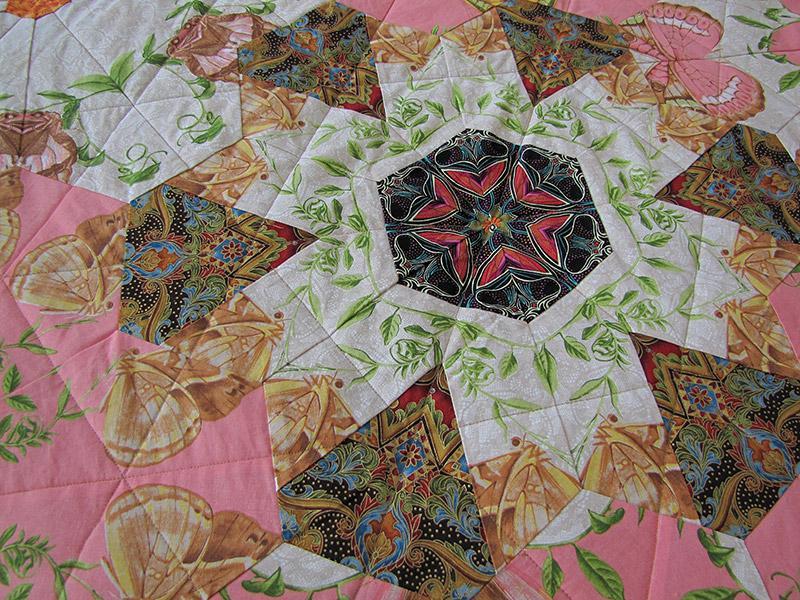
creativecommons.org
Patchwork is one of the simplest and most effective sewing techniques. The best part is that unusual images can be created literally from scrap materials, the main thing is to follow simple rules. In this article we will look at how to sew a kaleidoscope patchwork with your own hands. At the end of the material you will find examples with photographs of the work, as well as a description of the “kaleidoscope” patchwork technique for beginners.
What is patchwork
Patchwork is an ancient patchwork technique. Using this technique, craftswomen create truly unique things that, no matter how hard they try, would be difficult to replicate exactly. The modern name comes to us from the English words “hatch” (patch) and “work” (work), which can be translated as “work on the patch”. This borrowed word very accurately conveys the essence of the work: the general technique is to connect pieces of fabric into a single mosaic canvas.
Where did patchwork originate?
It is not known for certain which country became the birthplace of patchwork.This type of creativity has been known since ancient times, when people tried to save material as much as possible, establish waste-free production and keep themselves busy during long evenings. So to speak, patchwork is reasonable consumption for the ancients. The oldest patchwork, woven from pieces of gazelle skin, is now in the Cairo Museum, the exhibit dates back to the 980s BC. It is believed that patchwork came to Europe from the East after the Crusades, when oriental carpets, pillows and even flags made using the patchwork technique began to be brought to markets. In the 4th-9th centuries, in Europe, pilgrims, coming to holy places, could leave pieces of their clothing there so that these fragments would be combined into a large carpet. In general, in those days, patchwork was rather a necessity.
Everything changed with the discovery of a new continent in 1492. Initially, the first settlers, like the Europeans, saved expensive fabric: women fancifully repaired leaky blankets, making unusual designs from colorful patches, or even sewed a new blanket from dissimilar pieces of fabric. Gradually, life in the United States improved, and patchwork turned into a national pastime. And this fashion even migrated to Europe for a short time. Housewives were already consciously buying fabrics with unusual designs and making unusual patterns out of them and competing with each other (by the way, large-scale competitions for patchwork craftswomen are still held in America). The second patchwork boom in Europe occurred in the 18th century, when England, receiving luxurious fabric from India, was faced with such a variety of colors and patterns. But with the deterioration of trade relations between London and its colony, the popularity of patchwork began to decline for natural reasons.
What is patchwork “kaleidoscope”

creativecommons.org
Patchwork “kaleidoscope” is an ornament consisting of repeating geometric shapes, most often polygons. In turn, each of these figures consists of exactly the same repeating fragments. One of the most spectacular is the “kaleidoscope” patchwork with hexagons or hexagons. For beginners, it is better to start with simple square kaleidoscopes in order to practice the skill and not waste time selecting partitions between hexagons and adjusting shapes. Over time, you can reach a high artistic level, like the American artist and designer Bruce Seeds, who sews using the “kaleidoscope” patchwork technique and creates huge wall quilts.
Basic rules of patchwork “kaleidoscope”
Unusual patchwork “kaleidoscopes” are made mainly from one type of material. To simplify: a bright piece with a pattern is taken, and then it is cut into separate fragments and stitched again into one canvas, but in a special order. It is important to take into account that for the “kaleidoscope” patchwork technique, fabric with not every print is suitable.
You should immediately refuse:
- Plain materials or materials with an unexpressed pattern.
- Fabrics with too small, uniform patterns.
- Fabrics with rare patterns with large distances between print fragments.
- Fabrics with excessively large patterns without detail.
For a kaleidoscope patchwork, you need to choose fabrics with medium-sized prints in the form of flowers or any other complex repeating pattern.
What you need for a kaleidoscope patchwork
For this technique, it is worth thoroughly stocking up on basic equipment, which can come in handy at the moment of flight of creative imagination.
- Cuts of fabric with a medium pattern and a small distance between the fragments of the pattern.
- Soap, pencil or special disappearing marker.
- Ruler and tape for sewing. It is important to make sure that the tape and ruler have the same divisions; The thing is, sometimes these metrics don't match up.
- Scissors and/or a sharp utility knife.
- Roller knife with a mat (needed if kaleidoscope patchwork becomes your hobby.
- Needles and pins of different sizes.
- Multi-colored threads.
- Braid and ribbons for decorating the finished product.
- Stencils and templates.
Step-by-step training in the kaleidoscope technique
Definition of a repeating pattern, or rapport. Designate an area with a pattern that interests you and mark the reference points - the conditional beginning and end of the repeating pattern
- Cut a piece of fabric. Cut the fabric into the desired number of repeating pieces. If you decide to repeat the hexagon pattern, you will need six identical triangle pieces with angles of 60 degrees each.
- Cut them and combine them so that the pattern matches.
- Pin sets of scraps for each individual hexagon. Make sure that the set matches the pattern as perfectly as possible.
- We lay out a new pattern and sew it with stripes.
- If desired, decorate with braid or ribbons.


 0
0